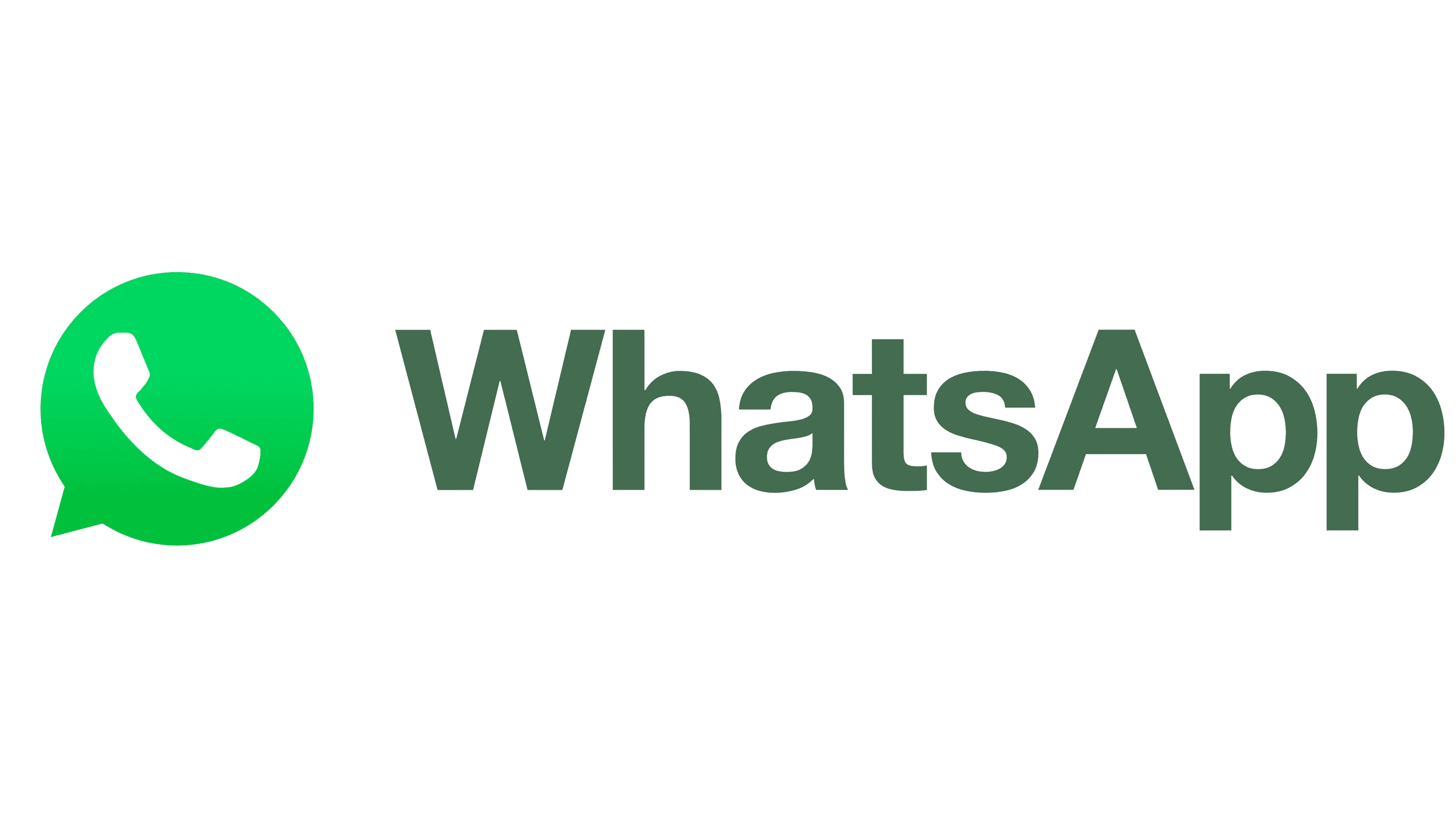WhatsApp Logo
Tags: messenger | online chat
Launched in 2009 by two former Yahoo employees, WhatsApp quickly became a staple in mobile communication due to its intuitive design and compatibility with numerous mobile operating systems while conserving data. The app facilitates sending texts, making calls, and sharing multimedia and location information.
Meaning and History
Standing out among early mobile apps, WhatsApp offered ad-free messaging, emphasizing a streamlined, direct user experience. The introduction of end-to-end encryption in 2016 reinforced its commitment to user privacy by making conversations secure and private. WhatsApp’s trajectory has been marked by swift expansion and profound influence on communication. By 2014, it had attracted over 600 million users, signaling a shift from traditional texting to internet-based messaging.
This growth drew Facebook’s interest, leading to a notable acquisition worth $19 billion. The integration with Facebook sparked privacy debates, yet WhatsApp’s user base continued to expand globally. It has turned into an essential tool for both personal and professional use, exemplified by features like WhatsApp Business that facilitate corporate communications.
Reflecting digital communication trends, WhatsApp evolved from a text-based service to a multifaceted platform offering a variety of media options and encryption methods, making global communication more equitable. Its significance stretches beyond individual use, providing a critical communication link in regions with limited traditional infrastructure. Despite facing scrutiny, WhatsApp maintains a strong stance on user privacy. Continuous updates and feature enhancements keep the platform at the forefront of messaging services, catering to its diverse and expanding user community.
What is WhatsApp?
WhatsApp emerged as a revolutionary messaging platform in 2009, founded by Brian Acton and Jan Koum, who were motivated by a vision to create a user-centric, ad-free communication experience. Its appeal lies in its simplicity, broad compatibility with mobile operating systems, and low data consumption, quickly becoming a favorite among users worldwide.
2009 – today
The WhatsApp logo is iconic, with a messaging bubble that highlights its primary function as a messaging app. Inside the bubble, there’s a phone receiver at a slight angle, nodding to the app’s roots in traditional phone calls but is updated for today’s instant messaging world. ‘WhatsApp’ is written to the right othis symbol in a clean, sans-serif typeface, striking a balance between boldness and readability to ensure it stands out and is easily recognized. Using of a sans-serif font underscores a modern, digital-first approach to design.
Color
The logo predominantly uses a vibrant green for the messaging bubble, symbolizing vitality, renewal, and success, mirroring the app’s aim to foster dynamic and refreshing communication. A deeper forest green colors the brand name, enhancing the brighter bubble with a sense of reliability and professionalism. Against a white backdrop, the logo commands attention, its color palette not only striking but also fostering a strong brand identity amidst the plethora of digital icons and platforms.
Font
The WhatsApp logo text uses a bold, sans-serif font that emphasizes simplicity and clarity, with even line thickness for a contemporary, friendly appearance. Its letters are well-spaced, enhancing readability—a key factor for brand visibility. Unique elements like the rounded tops on the ‘W’ and ‘A’ and the curved bottom of the ‘t’ inject a subtle, playful quality, reflecting the app’s casual communication style. This straightforward font choice ensures the logo’s versatility, maintaining its impact across different contexts, from digital interfaces to promotional content.



